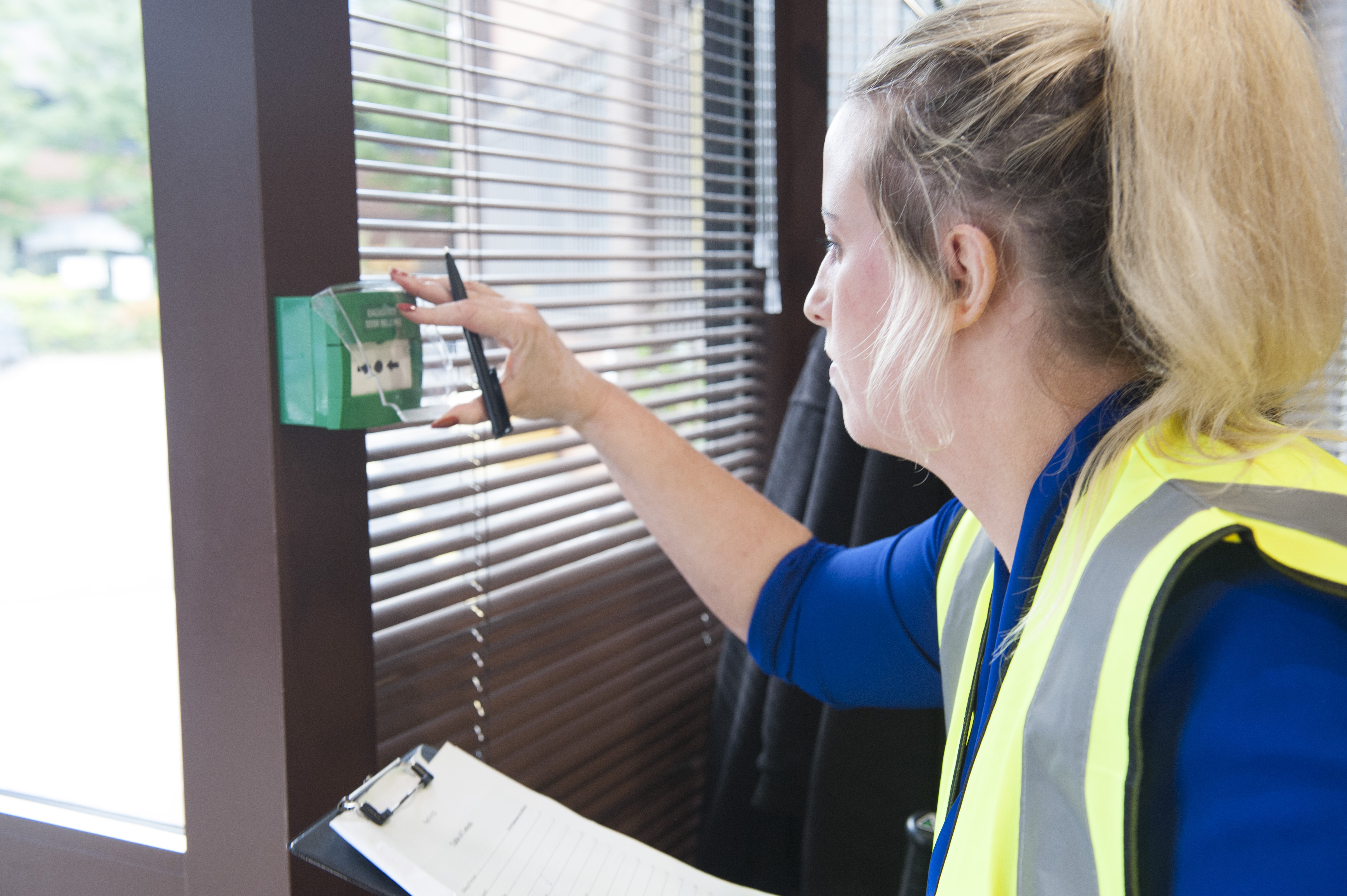Each workplace – from office buildings to building sites to factories – present different challenges, hazards and risks when it comes to fire safety. It’s important for every organisation to conduct regular fire risk assessments to scope out the risk level and any potential fire hazards specific to your workplace.
This blog will help explain the importance of fire risk assessments in the workplace, who is responsible, and what it should include.
What is a fire risk assessment?
A fire risk assessment is an organised and systematic look at a premises, the activities performed, and chances of a fire that could start and cause harm to people.
Hazard: Anything with the potential to cause harm, damage, production losses or increase liability.
Risk: The likelihood and severity (consequence) of a substance, activity or process to cause harm.
For example, multiple plugs in a socket are a hazard. The risk is how likely that will overload and cause a fire.
A fire risk assessment forms part of the Fire Safety Order and helps reduce the risk of fire in the workplace.
Who is responsible for completing a fire risk assessment?
Responsibility for complying with fire safety legislation sits with the employer and others who may have control of the workplace.
As part of this legislation, the employer will nominate a person or persons to train as fire marshals or fire wardens. Adequate fire marshal training must be provided to fire marshals to carry out risk assessments as part of their fire safety duties.
When is a fire risk assessment required?
A fire risk assessment is required as part of fire safety regulations in line with the Fire Safety Order.
Workplaces can change regularly and may present different challenges year on year. For example, building layout could mean new fire doors need installing; new products arriving on site may present new fire hazards; or different equipment may require changes in electrical operations.
It’s important for organisations to regularly review their fire risk assessments, to adapt to changing environments and keep the risk of fire to a minimum.
Learn more about fire marshals and fire safety.
What should a fire risk assessment include?
There are five stages to the fire risk assessment process.
Stage 1 – Identify fire hazards
A fire can start due to an accident, deliberate act or where somebody has failed to act when they should have (omission).
Consider:
- What items are likely to cause a fire in the workplace?
- What are the sources of ignition (heat), fuel and oxygen?
- What activities are carried out in the workplace and could these pose a fire risk?
Stage 2 – Identify the people at risk
Identify people who are likely to be in or around the premises. This may include both staff and visitors. Additionally, some people may be especially at risk and require additional consideration in your assessment, such as those who are:
- working near a fire hazard
- working alone or in isolated areas
- very young/elderly, infirm, disabled or have impaired sight or hearing, or parents with children.
- unfamiliar with the layout or risks in the workplace
- possibly asleep in the workplace.
Stage 3 – Evaluate and act
To evaluate the risk of fire in your workplace, think about:
- How likely is it that something could go wrong and a fire could start?
- How serious would the outcome be if a fire did start e.g., could it impact on an escape route or would it be contained in a bin?
Once all the relevant factors have been considered, the likelihood and severity of a fire incident can be considered and appropriate measures put in place to reduce or remove the risk.
The best way to protect people from harm caused by fires is to prevent fires from starting in the first place. Protect people and property by providing fire precautions. Have audible and visible alarms, extinguishers and protected and clear evacuation routes.
Stage 4 – Record, plan and train
Keep a record of any fire hazards and what you have done to reduce or remove them. If you employ five or more staff, then you must keep a record of what you have found and what action you have taken.
You must also have a clear plan of how you will prevent a fire and how you will keep people safe if a fire did occur.
Provide training so people know what to do in the event of a fire and how to reduce the risk of a fire starting in the first place.
Stage 5 – How often should a fire risk assessment be reviewed?
Review your fire risk assessment regularly. Over time the risks may change and you may need to revise it. If you identify significant changes in risk or make changes to your plan you must tell others that share the premises and where appropriate retrain staff.
Everyone has a responsibility to keep the working environment safe. If you see what you consider is a fire hazard (or any potential hazard or risk):
- Assess how dangerous it is.
- Act immediately to reduce the risk if possible.
- Report as appropriate.
How to reduce the risk of fire in the workplace
The best way to reduce the risk of fire in the workplace is to carry out effective and thorough fire risk assessments regularly.
By training your responsible persons and fire marshals to carry out fire risk assessments in line with the Fire Safety Order, you will reduce risk and ultimately protect lives. Doing this with an Institution of Fire Engineers (IFE)-accredited training provider like the British Red Cross gives you not only the highest quality training, but also peace of mind learning from a trusted organisation.
Topics: Health & Safety, Fire Marshal


